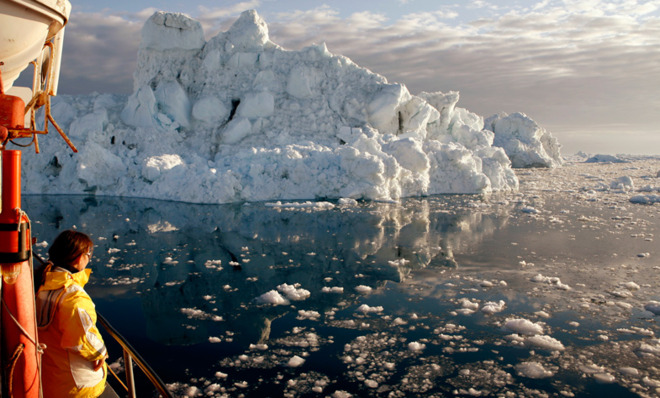The Greenland ice sheet is melting at an alarming rate
If completely melted, the ice sheet could raise the global sea level by more than seven meters


Warming in the Arctic has now reached the northernmost sections of the Greenland ice sheet. After a long period of stability (more than 25 years), we have found in a new study of the region that the northeast section of the ice sheet is no longer stable. This means global sea levels may rise even faster than was previously anticipated.
The Greenland ice sheet is a vast body of ice covering roughly 80 percent of the surface of Greenland. The northeast portion has one of the longest ice streams (rivers of ice) and drains a huge area. It was previously thought to be very cold and therefore stable.
Our new study shows how, over the past eight years, it has actually lost an increasing amount of ice. Satellite images show that the ice loss rate here is now the second largest in Greenland — only exceeded by the Jakobshavn Glacier.
The Week
Escape your echo chamber. Get the facts behind the news, plus analysis from multiple perspectives.

Sign up for The Week's Free Newsletters
From our morning news briefing to a weekly Good News Newsletter, get the best of The Week delivered directly to your inbox.
From our morning news briefing to a weekly Good News Newsletter, get the best of The Week delivered directly to your inbox.
Pointing out mis-predictions
This means that other models have underestimated the total mass loss and thus Greenland’s future contributions to global sea level change. To date, calculations of future rises in sea levels have not accounted for the large contribution of ice flowing into the ocean from this part of Greenland. Published in Nature Climate Change, our new study points out this mis-prediction.
Many modelling approaches used to assess future sea level rises have suggested that the northeastern sector of the ice sheet is relatively stable and therefore not contributing to any significant ice mass loss. They have used data from the last decade to model the Greenland ice sheet’s contribution to sea level rise by 2100, but they assume no mass loss in northeast Greenland, which is incorrect.
Our study used a combination of old aerial photographs from 1978, and modern satellite observations to measure the thinning of Greenland’s glaciers. Together, they show that the thinning from 1978 to 2003 in the northeast was very limited. But, since 2006 there has clearly been a sustained mass loss in this section.
A free daily email with the biggest news stories of the day – and the best features from TheWeek.com
This increased loss is due to a combination of warmer summer air temperatures and warmer sea temperatures. This regional warming has reduced the extent of sea ice around the ice sheet, which has a stabilizing effect on the glacier margins.
Unlike other large glaciers in Greenland, the Northeast ice sheet has an ice stream, which reaches more than 600km directly into its interior. This implies that changes at the marginal can affect the mass balance deep in the centre of the ice sheet. The fact that this ice loss is associated with a major ice stream that channels ice from deep in the interior of the ice sheet does add additional concern about what might happen. Due to the huge size of the Northeast Greenland ice stream, it has the potential to significantly change the total balance of the ice sheet overall in the near future.
New and surprising
The fact that the overall decline of the Greenland ice sheet has generally increased over the past few decades is well known. But the increasing contribution from the very cold northeastern part of the ice sheet during the last seven to eight years is new and very surprising. Over the past decade the front of the glacier has retreated by about 20km from the coast. This compares with a 35km retreat of the Jakobshavn glacier in warmer, western Greenland over the last 150 years.
The Greenland ice sheet has contributed more than any other ice mass to sea-level rise over the past two decades. It accounts for an increase in average levels around the world of 0.5mm per year, out of a total increase of 3.2mm per year. If completely melted, the ice sheet has the potential to raise global sea level by more than seven meters.
More from The Conversation...
-
 Homes with great fireplaces
Homes with great fireplacesFeature Featuring a suspended fireplace in Washington and two-sided Parisian fireplace in Florida
-
 Is $140,000 the real poverty line?
Is $140,000 the real poverty line?Feature Financial hardship is wearing Americans down, and the break-even point for many families keeps rising
-
 Film reviews: ‘The Secret Agent’ and ‘Zootopia 2’
Film reviews: ‘The Secret Agent’ and ‘Zootopia 2’Feature A Brazilian man living in a brutal era seeks answers and survival and Judy and Nick fight again for animal justice